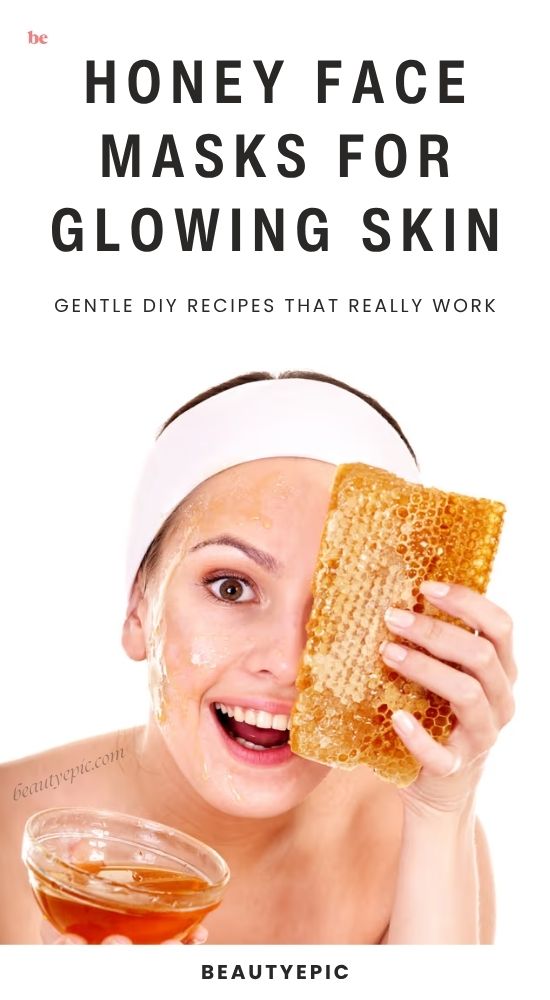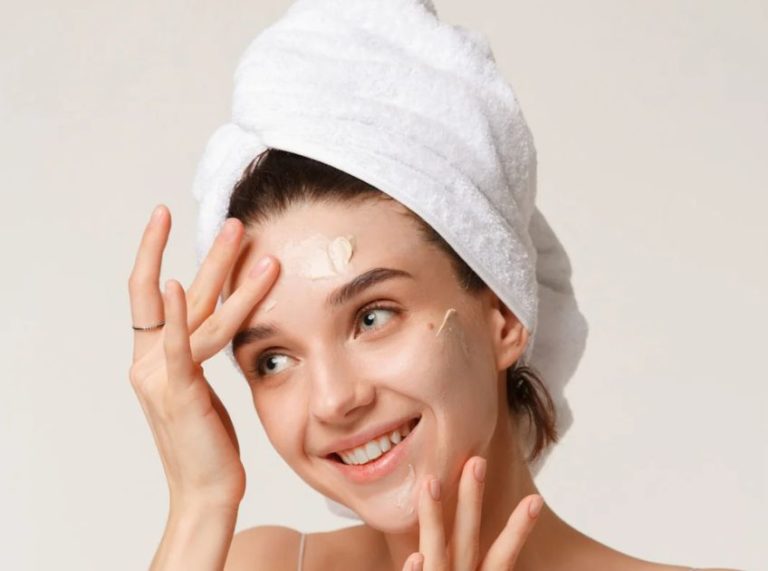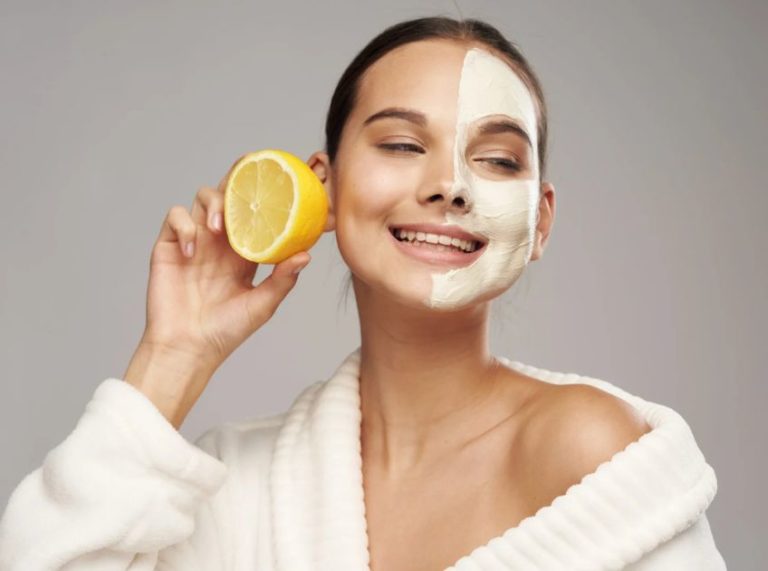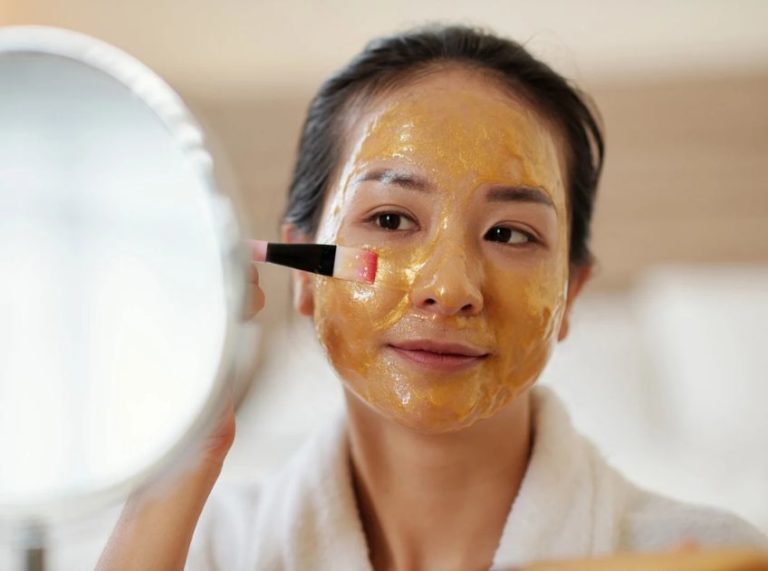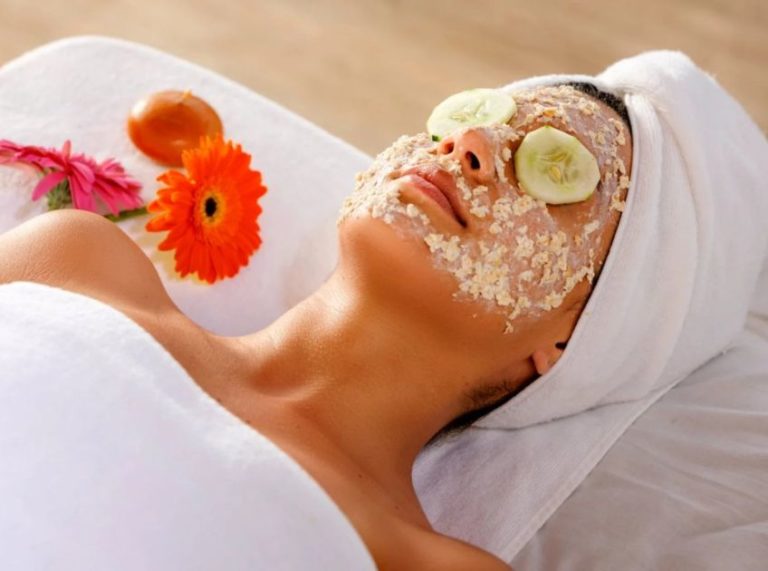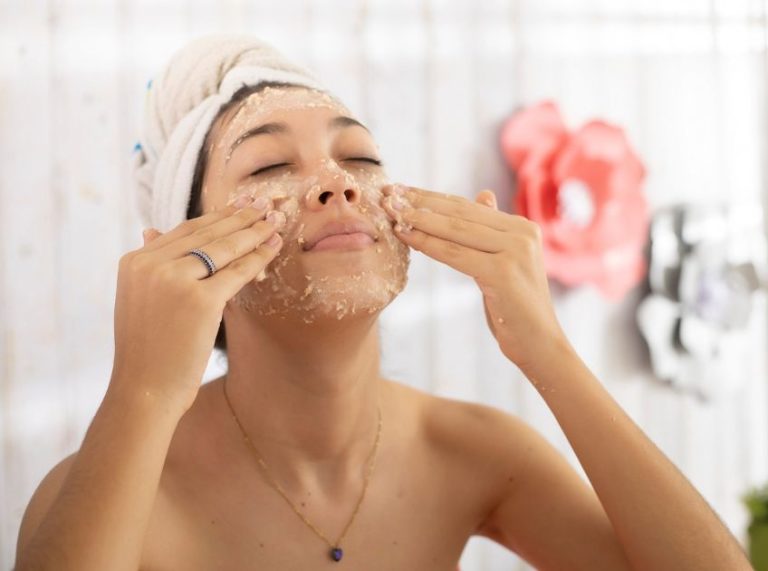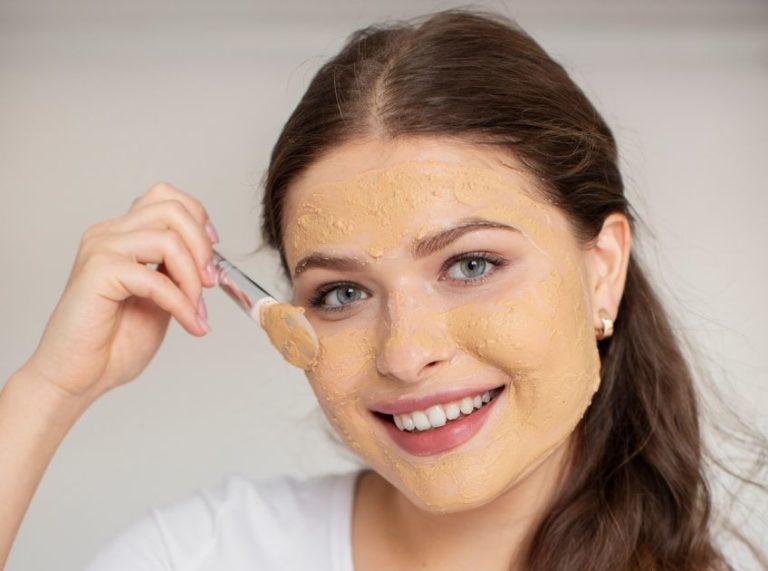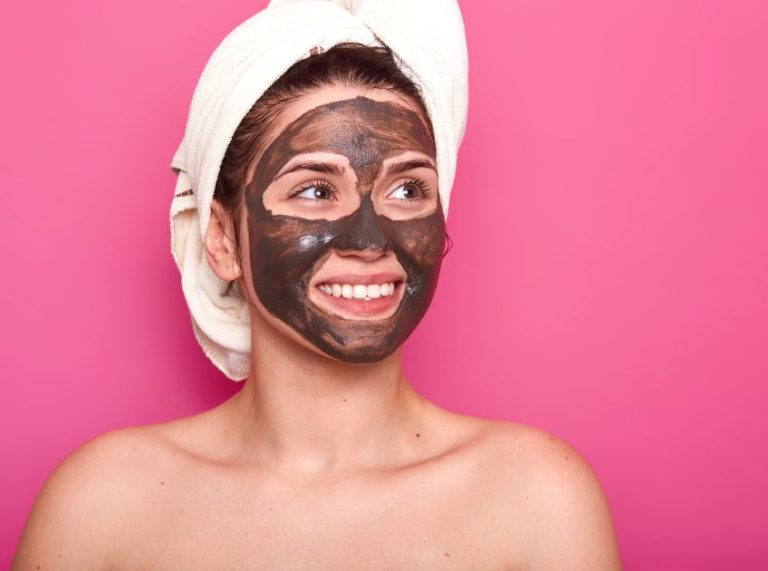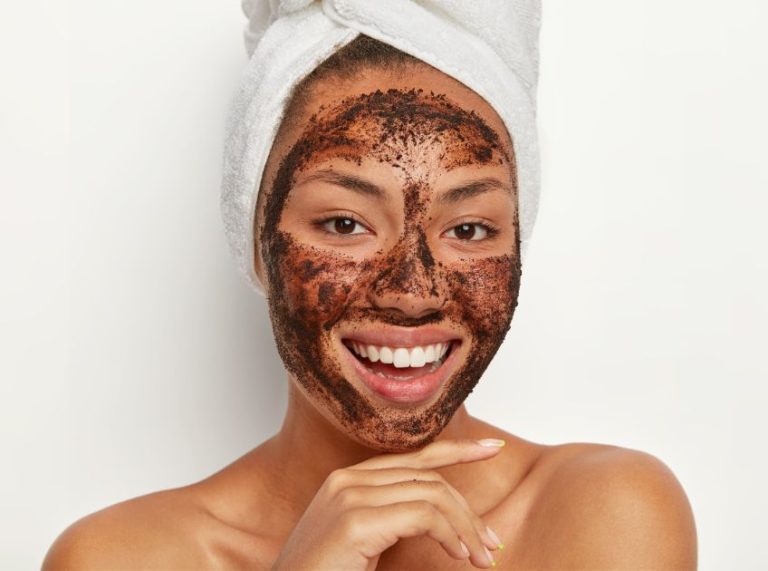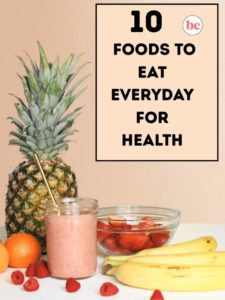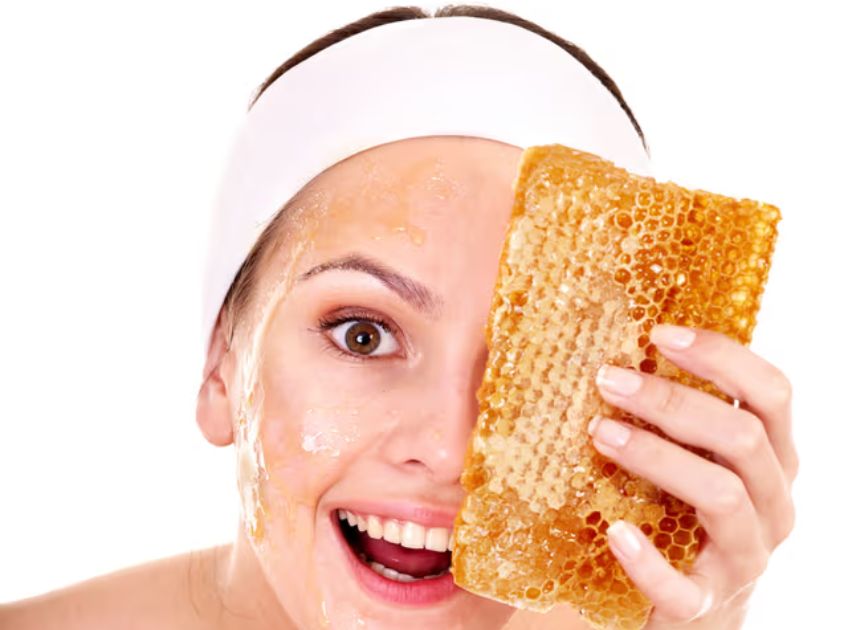
Important: This article is for informational purposes only. Please read our full disclaimer for more details.
Honey has been used in beauty rituals for centuries—from Cleopatra’s milk-and-honey baths to modern-day skincare. Packed with antioxidants, natural enzymes, amino acids, and humectant properties, honey hydrates deeply, fights free radicals, and promotes skin healing. Studies in dermatology confirm that honey helps with wound healing, hydration, and antibacterial protection, making it an excellent base for glowing, healthy skin (1).
3 Easy DIY Honey Face Masks for Glowing Skin
1. Honey & Lemon Brightening Pack
If your skin looks dull, tired, or uneven, this quick mask can help revive its natural glow.
- Ingredients
- 1 tbsp raw honey (organic or Manuka is ideal)
- ½ tsp fresh lemon juice
- Step-by-Step
- In a clean bowl, mix honey and lemon juice.
- Cleanse your face to remove oil and dirt.
- Using clean fingers or a brush, apply a thin, even layer to your face, avoiding the eyes and lips.
- Let it sit for 8–10 minutes.
- Rinse with lukewarm water and gently pat dry.
- Apply a light moisturizer.
- Why It Works
- Lemon provides vitamin C, a natural skin-brightening agent that fades mild pigmentation.
- Honey balances lemon’s acidity with hydration and antimicrobial protection.
- The combination helps restore a fresh, radiant look.
- Optional Variations:
- Add 1 tsp of rose water for extra soothing.
- Mix in ½ tsp turmeric if you also want an anti-inflammatory boost.
- Pro Tip: Apply only at night and always follow with sunscreen the next day—lemon can make your skin photosensitive.
2. Honey & Yogurt Hydrating Pack
Best suited for dry, flaky, or rough skin, this mask restores softness and glow in minutes.
- Ingredients:
- 1 tbsp raw honey
- 1 tbsp plain yogurt (unsweetened and unflavored)
- Step-by-Step:
- Mix honey and yogurt until smooth.
- On a cleansed face, apply a generous layer.
- Leave it on for 12–15 minutes.
- Gently rinse with cool water.
- Finish with a hydrating cream if needed.
- Why It Works:
- Yogurt contains lactic acid, a gentle exfoliant that removes dead skin and smoothens texture.
- Honey provides deep hydration and helps skin look plump and luminous.
- The combo works like a natural moisturizer plus mild peel.
- Optional Variations:
- Add ½ tsp olive oil or almond oil if your skin is extra dry.
- Mix in ½ mashed banana for added nourishment.
- Pro Tip: Keep yogurt at room temperature before applying it to avoid shocking sensitive skin with cold.
3. Honey & Turmeric Glow Pack
This is a classic Ayurvedic remedy for radiant skin and acne control.
- Ingredients
- 1 tbsp raw honey
- ¼ tsp turmeric powder (organic, food-grade)
- Step-by-Step
- In a bowl, mix turmeric with honey until well blended.
- Apply a thin layer to your face, focusing on areas prone to breakouts or dullness.
- Leave for 10–12 minutes only (avoid leaving longer to prevent staining).
- Rinse off gently with lukewarm water.
- Pat dry and follow up with moisturizer.
- Why It Works
- Turmeric’s active compound curcumin has anti-inflammatory and antibacterial properties, making it great for acne and redness.
- Honey soothes, hydrates, and reduces post-acne marks.
- Together, they leave the skin clear, glowing, and even-toned.
- Optional Variations:
- Add ½ tsp of milk to make the mask thinner and easier to spread.
- Mix in a drop of tea tree oil if your skin is acne-prone.
- Pro Tip: Apply a very thin layer to avoid yellow stains. If staining occurs, wipe gently with rose water or milk.
The Science Behind Honey in Skincare
Research published in the Journal of Cosmetic Dermatology highlights honey’s antimicrobial and moisturizing effects, making it effective for conditions like acne, dry skin, and even wound healing (2)(3). It’s natural sugars draw moisture into the skin (acting as a humectant), while its antioxidants fight premature aging and oxidative stress.
Frequently Asked Questions (FAQ’S)
1. Can I apply honey directly to my face?
A. Yes, raw honey can be used alone as a quick 10-minute mask. It hydrates, soothes, and reduces mild acne.
2. How often should I use honey face packs?
A. 2–3 times a week is ideal. Overuse may cause stickiness and clogged pores in oily skin types.
3. Are these packs safe for all skin types?
A. Mostly yes, but always do a patch test—especially if you’re allergic to pollen or bee products. Sensitive skin should avoid too much lemon or turmeric.
Final Thoughts
Homemade honey face packs are one of the simplest yet most effective ways to achieve glowing skin without harsh chemicals. Whether you want brightness, hydration, or acne relief, honey can be paired with natural kitchen ingredients to create powerful masks that are gentle yet effective. With regular use, these DIY packs can help restore your skin’s natural radiance.
